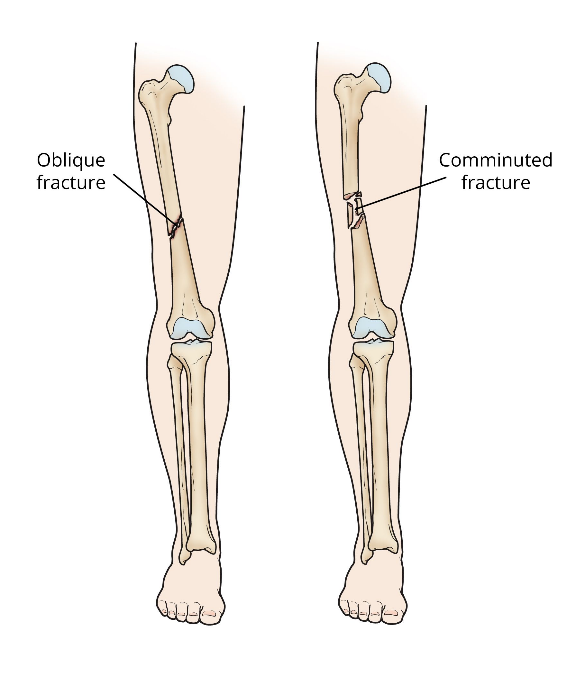A nurse is assessing a client who reports a nevus that has increased in size and an irregularly shaped lesion that varies in color. These findings are consistent with which of the following medical diagnoses?
Squamous cell carcinoma
Malignant melanoma
Kaposi's sarcoma
Basal cell carcinoma
The Correct Answer is B
Choice A reason:
Squamous cell carcinoma typically presents as a rough, scaly, red patch, open sore, or raised growth with a central depression, often on sun-exposed areas of the body. While it can appear as a lesion that varies in color, it is not commonly associated with a nevus that has increased in size.
Choice B reason:
Malignant melanoma is associated with changes in preexisting nevi, such as an increase in size and variations in color. It often appears as a mole that changes in color, size, or feel and may have irregular edges. The description of the lesion provided by the client is characteristic of malignant melanoma, making this the correct diagnosis.
Choice C reason:
Kaposi's sarcoma is a cancer that forms in the lining of blood and lymph vessels and typically appears as patches of abnormal tissue on the skin or mucous membranes. These lesions are usually red or purple and look similar to bruises¹. They are not typically described as nevi that increase in size or lesions that vary in color.
Choice D reason:
Basal cell carcinoma often appears as a slightly transparent bump on the skin, though it can take other forms. It usually presents as a pearly white or pink bump on white skin, or a brown or black bump on darker skin, and is most often found on sun-exposed areas. It is not typically associated with a nevus that has increased in size or an irregularly shaped lesion that varies in color.
Nursing Test Bank
Naxlex Comprehensive Predictor Exams
Related Questions
Correct Answer is D
Explanation
Choice A reason:
Measuring the circumference of the thigh can be part of the assessment for swelling or edema, which may indicate compartment syndrome or other issues. However, it is not a direct measure of neurovascular status, which focuses on blood flow and nerve function.
Choice B reason:
Palpating the femoral pulse is important for assessing blood flow to the leg, but for a midshaft femur fracture, more distal pulses such as the popliteal, dorsalis pedis, or posterior tibial pulses would be more indicative of the neurovascular status of the affected limb.
Choice C reason:
Monitoring the client's calf for edema is a useful technique for identifying signs of swelling that could suggest complications like deep vein thrombosis or compartment syndrome. However, it does not provide a complete picture of neurovascular integrity, which also includes sensory and motor function assessment.
Choice D reason:
Instructing the client to wiggle his toes is a direct assessment of motor function, which is a key component of neurovascular status. This action, along with checking for sensation and capillary refill, helps to determine if there is any impairment in nerve function or blood supply to the affected area.

Correct Answer is ["A","C","D"]
Explanation
The correct answer is: a. Temperature, c. Color, d. Sensation.
Choice A: Temperature
Reason: Monitoring the temperature of the affected extremity is crucial in evaluating neurovascular status. A cool or cold extremity can indicate decreased perfusion, which may be a sign of neurovascular compromise. Normal skin temperature should be warm to the touch, indicating adequate blood flow.
Choice B: Ecchymosis
Reason: Ecchymosis, or bruising, is not a direct indicator of neurovascular status. While it can provide information about trauma or bleeding, it does not assess the functionality of nerves or blood vessels in the affected extremity.
Choice C: Color
Reason: Assessing the color of the extremity is essential. Pallor or cyanosis can indicate poor blood flow or oxygenation, which are critical signs of neurovascular impairment. Normal color should be consistent with the rest of the body, indicating good circulation.
Choice D: Sensation
Reason: Evaluating sensation helps determine if there is any nerve damage or impairment. Changes in sensation, such as numbness or tingling, can indicate neurovascular compromise. Normal sensation should be intact and symmetrical with the unaffected extremity.
Choice E: Skin Integrity
Reason: While skin integrity is important for overall wound healing and infection prevention, it is not a primary parameter for assessing neurovascular status. It does not provide direct information about blood flow or nerve function.
Whether you are a student looking to ace your exams or a practicing nurse seeking to enhance your expertise , our nursing education contents will empower you with the confidence and competence to make a difference in the lives of patients and become a respected leader in the healthcare field.
Visit Naxlex, invest in your future and unlock endless possibilities with our unparalleled nursing education contents today
Report Wrong Answer on the Current Question
Do you disagree with the answer? If yes, what is your expected answer? Explain.
Kindly be descriptive with the issue you are facing.
